Courses Overview
The McKenzie Institute Education Programme offers a range of courses. For an overview of each explore below by course type.
The requirements for undertaking each part of the core curriculum is that Part A must be completed first, and Part D last. Parts B and C may be undertaken in any order at the discretion of the participant.
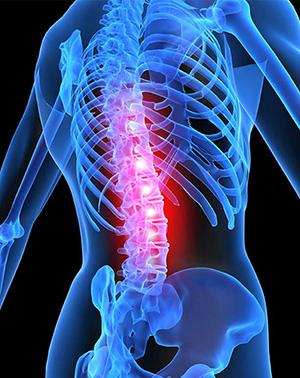
Course Overview
This 28-hour course introduces the theoretical aspects and concepts of the McKenzie System as it is applied to the musculoskeletal system. The focus of this course, which is the first in the McKenzie course series, is the assessment, classification and management of patients with complaints of low back, related leg symptoms and functional limitations.
In certain countries, all or some of the course is completed as online distance learning. This online component is usually completed prior to attending the teaching venue with an Instructor. In countries that don't utilise online distance learning, the full 28-hour course is completed onsite with an Instructor.
The principles of MDT and how they apply in the context of the biopsychosocial framework of managing patients with musculoskeletal pain and functional limitations will be a key focus. The participants will explore and extensively practice the MDT assessment, classification and management process through lectures, workshops, discussions, role plays and live patient assessments. The MDT classifications are described in detail and appropriate management plans are discussed, with emphasis on the use of patient self-treatment procedures and education. Indications for the use of clinician procedures will also be discussed and the procedures demonstrated and practiced.
Follow-up patient assessments will illustrate the reassessment process and allow participants to get a realistic feel and understanding of the impact of the MDT system on differing patient presentations over 2-3 treatment sessions.
The course will include an illustrated manual and complete reference list. Participants will also have access to videos of all procedures, the full reference list on the MII website and a voluntary self-assessment post-course quiz (English Only).
Course Goals
By participating fully with this course, a participant will be able to :
- Appropriately apply MDT to patients with lumbar spine symptoms, in the context of a biopsychosocial model of care
- Distinguish between the MDT classifications, and provide appropriate management regimes for each of the classifications
- Identify Drivers of Pain and Disability that may have implications for the management of patients and their outcomes
- Identify when the application of clinician forces are required for the resolution of symptoms using MDT’s “progression of forces” concept.
- Assist patients to design and apply the therapeutic processes required to achieve the patient’s goals
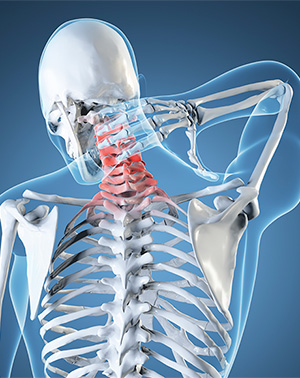
Course Overview
This 28-hour course focuses on the application of MDT to the cervical and thoracic spine. The course details the assessment, classification and management of patients with complaints of cervical and thoracic pain, related arm symptoms and functional limitations.
In certain countries, all or some of the course is completed as online distance learning. This online component is usually completed prior to attending the teaching venue with an Instructor. In countries that don't utilise online distance learning, the full 28-hour course is completed onsite with an Instructor.
The participants will explore and extensively practice the MDT assessment, classification and management process through lectures, workshops, discussions, role plays and live patient assessments. The MDT classifications are described in detail and appropriate management plans are discussed, with emphasis on the use of patient self-treatment procedures and education. Indications for the use of clinician procedures will also be discussed and the procedures demonstrated and practiced.
The principles of MDT and how they apply in the context of the biopsychosocial framework of managing patients with cervical and thoracic pain and functional limitations will be a key focus. The participants will explore and extensively practice the MDT assessment, classification and management process through lectures, workshops, discussions, role plays and patient assessments.
Follow-up patient assessments will illustrate the reassessment process and allow participants to get a realistic feel and understanding of the impact of the MDT system on differing patient presentations over 2-3 treatment sessions.
The course will include an illustrated manual and complete reference list. Participants will also have access to videos of all procedures, the full reference list on the MII website and a voluntary self-assessment post-course quiz (English Only).
Course Goals
By participating fully with this course, a participant will be able to:
- Appropriately apply MDT to patients with cervical / thoracic symptoms in the context of the biopsychosocial model of care
- Distinguish between the McKenzie classifications and provide appropriate management regimes for each of the classifications
- Identify when the application of clinician forces are required for the resolution of symptoms using McKenzie’s “progression of forces” concept
- Assist patients to design and apply the therapeutic processes required to achieve the patient goals
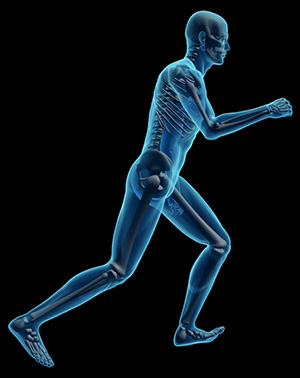
Course Overview
This 28-hour course will review and advance the theory and practical application of MDT in relation to the Lumbar Spine and introduce the concept of MDT in the management of lower extremity musculoskeletal disorders.
In certain countries some of the course is completed as online distance learning. This online component is usually completed prior to attending the teaching venue with an Instructor. In countries that don't utilise online distance learning, the full 28-hour course is completed onsite with an Instructor.
The course will firstly assist the participants in expanding their capabilities for the assessment, classification and management of patients with complaints of low back, related leg symptoms and functional limitations. Secondly, the theory and practical application of MDT for lower extremity musculoskeletal disorders is presented. Lectures, patient assessments, discussions and practice of procedures are utilised to demonstrate the characteristics and management of the MDT classifications as they present in the lower extremity.
Problem solving, reflective learning and clinical reasoning activities are utilised to ensure the participant has a broader knowledge of MDT in the biopsychosocial framework of the patient’s experience. The participants will have the opportunity to discuss and extensively practice the MDT assessment, classification and management process through workshops, discussions, and patient assessments. Practical sessions are utilised to develop skills in the application of both self-treatment and clinician procedures.
Follow-up patient demonstrations will illustrate the reassessment process and allow participants to get a realistic feel and understanding of the impact of the MDT system on differing patient presentations over 2-3 treatment sessions.
The course will include an illustrated manual and complete reference list. Participants will also have access to videos of all procedures, the full reference list on the MII website and a voluntary self-assessment post-course quiz (English Only).
Lumbar Spine Course Goals
By participating fully with this module, a participant will be able to:
For the Lumbar Spine
- Analyse common problems encountered in the application of MDT for the lumbar spine, enhancing clinical reasoning and patient outcomes
- Appraise the MDT assessment within a biopsychosocial framework to accurately diagnose and classify lumbar spine conditions, ensuring a comprehensive approach to patient care
- Examine the MDT assessment process to improve clinical reasoning, ensure patient safety, and promote effective self-management strategies for lumbar spine conditions
- Evaluate MDT management principles, based on MDT classifications, focusing on management, reassessment, patient education, while effectively handling advanced case presentations
For the Lower Extremities
- Indicate the characteristics of MDT classifications specific to the lower extremity
- Apply the MDT assessment within a biopsychosocial framework to accurately diagnose and classify lower extremity conditions, ensuring a comprehensive approach to patient care
- Construct appropriate management programs tailored to MDT classifications specific to the lower extremity
- Recognise the key drivers of pain and disability in patients with lower extremity impairments and associate these with MDT classifications to inform effective management strategies.
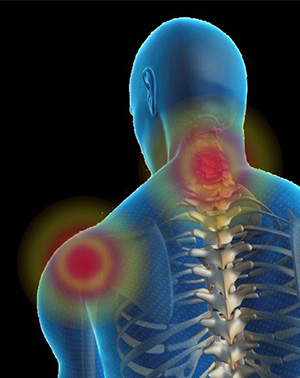
Course Overview
This 28-hour course will review and advance the theory and practical application of MDT in relation to the cervical and thoracic spine and introduce the concept of MDT in the management of upper extremity musculoskeletal disorders.
In certain countries some of the course is completed as online distance learning. This online component is usually completed prior to attending the teaching venue with an Instructor. In countries that don't utilise online distance learning, the full 28-hour course is completed onsite with an Instructor.
The course will firstly assist the participants in expanding their capabilities for the assessment, classification and management of patients with complaints of cervical and thoracic, related arm symptoms and functional limitations. Secondly, the theory and practical application of MDT for upper extremity musculoskeletal disorders is presented. Lectures, patient assessments, discussions and practice of procedures are utilised to demonstrate the characteristics and management of the MDT classifications as they present in the upper extremity.
Problem solving, reflective learning and clinical reasoning activities are utilised to ensure the participant has a broader knowledge of MDT in the biopsychosocial framework of the musculoskeletal experience. The participants will have the opportunity to discuss and extensively practice the MDT assessment, classification and management process through workshops, discussions, and patient assessments. Practical sessions are utilised to develop skills in the application of both self-treatment and clinician procedures.
Follow-up patient assessments will illustrate the reassessment process and allow participants to get a realistic feel and understanding of the impact of the MDT system on differing patient presentations over 2-3 treatment sessions.
The course will include an illustrated manual and complete reference list. Participants will also have access to videos of all procedures, the full reference list on the MII website and a voluntary self-assessment post-course quiz (English Only).
Cervical and Thoracic Spine Course Goals
By participating fully with this course, a participant will be able to:
For the Cervical and Thoracic Spine
- Analyse common problems encountered in the application of MDT for the cervical and thoracic spine, enhancing clinical reasoning and patient outcomes
- Appraise the MDT assessment within a biopsychosocial framework to accurately diagnose and classify cervical and thoracic conditions, ensuring a comprehensive approach to patient care.
- Examine the MDT assessment process to improve clinical reasoning, ensure patient safety, and promote effective self-management strategies for cervical and thoracic conditions
- Evaluate MDT management principles, based on MDT classifications, focusing on management, reassessment, patient education, while effectively handling advanced case presentations
For the Upper Extremities
- Indicate the characteristics of MDT classifications specific to the upper extremity
- Apply the MDT assessment within a biopsychosocial framework to accurately diagnose and classify upper extremity conditions, ensuring a comprehensive approach to patient care
- Construct appropriate management programs tailored to MDT classifications specific to the upper extremity.
- Recognise the key drivers of pain and disability in patients with upper extremity impairments and associate these with MDT classifications to inform effective management strategies
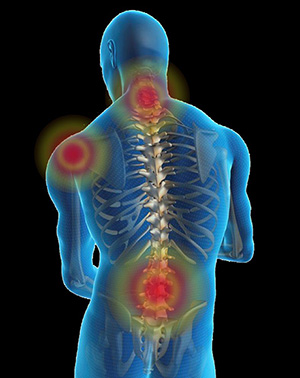
Course Overview
This intensive 14-hour course will focus on more advanced principles and practical application through clinical reasoning, problem solving, analysis of case studies, assessment and treatment of patients, and technique work.
Course Goals
The goal of this course is to build on prior knowledge gained from the introduction of extremities in Parts C and D to:
- Appropriately apply the McKenzie System to patients with extremity problems
- Distinguish between the MDT classifications as applied to the extremities
- Practice appropriate treatment regimens for the appropriate MDT classifications
- Identify when the application of force progressions or force alternatives are required for the resolution of symptoms using McKenzie's "progression of forces" concept
- Assist patients to design and apply the therapeutic processes on their own to maintain treatment goals
- Distinguish those patients who will be appropriate for MDT management and those who will not.
Prerequisites
Completion of the following McKenzie Institute courses, presented by licensed McKenzie Institute Faculty:
- Part D - Cervical and Thoracic Spine 2 and Upper Extremities
Preparation for the Course
To best prepare for the Advanced Extremities course, those who completed the curriculum prior to the inclusion of extremities in Parts C and D are highly encouraged to audit Parts C and D courses or read the textbook, The Human Extremities - Mechanical Diagnosis and Therapy, before attending.
MASTERCLASS - MDT and the Athlete
GOAL
Upon completion of this workshop, participants will be able to utilise and promote Mechanical Diagnosis and Therapy (MDT) in the examination, intervention and management of patients presenting with sports related musculoskeletal injuries, pain and limited function.
OBJECTIVES
Upon completion of this workshop, the participant will be able to:
- Explain the relevance and apply the principles of MDT (assessment, management, recovery of function, and prevention) to an athlete / member of the sports population presenting with a musculoskeletal injury;
- Identify key questions and possible considerations in the History and Physical Examination, that will assist in understanding the athlete’s training situation, ruling out serious pathology and establishing an MDT provisional classification.
- Analyse and adapt the use of a variety of mechanical loading strategies, based on the sub-group classification and principles of MDT, in the intervention and management of sport injuries, optimal sports training and injury prevention;
- Effectively apply the MDT evaluation algorithm and force progression concepts to identify athletes who may require alternative management strategies in their injury recovery.
OUTLINE
This manual and workshop emphasise the application of MDT to the athletic and sporting population. Discussion will focus on the role of MDT in sports medicine and the challenges of the current model of sports medicine. Case studies will be presented and practical sessions addressing the various key principles of MDT will be included to give examples of applying these principles. Therapists who have experience using MDT for Spine and Extremity disorders and who have a basic understanding of the principles of sport medicine will find the course most beneficial.
MASTERCLASS - MDT Management of Radicular Syndrome
This 2-day masterclass presents the theory and application of Mechanical Diagnosis & Therapy as applied in the examination and treatment of patients with spinal and / or related radicular symptoms. Emphasis will be placed on the evaluation and management of lumbar and cervical radiculopathies.
The pathologies that can lead to radiculopathy will be described and the clinical elements of each discussed. The role of injections and surgery will be discussed, including the role of MDT in postoperative management. The differential diagnosis of other causes of symptoms in the limbs will be explored.
Material will be presented through a mix of oral presentations, interview presentations, case study analysis and group problem solving. Clinicians who have some experience in the application of MDT in the context of spinal pathologies, will find this course particularly interesting and challenging.
Objectives
Through active participation in the masterclass, participants will develop their ability to:
- Describe the natural history of degenerative changes involving the spine and their relationship to the pathology of the nerve root.
- Discuss the natural history of spinal disorders and the role of conservative treatment and surgical treatment.
- Compare and contrast the signs and symptoms of somatic pain referred to the limb, from that arising from the involvement of a nerve root.
- Identify patients with radicular symptoms that will respond to MDT management and set up an individualized management program.
- Identify patients with radicular symptoms who do not respond to MDT and who require further medical investigations, interventions and / or surgical evaluations.
Duration
- 14 hours (face to face)
Prerequisites
- Participants must have completed at least Part C of the MDT Education Program.
- Participants should be familiar with the MDT assessment forms and terminology.
MASTERCLASS - MDT Management of Chronic Pain
Course Overview
There are several different pain classifications in practice based on expert opinion. These systems need to be comprehensive enough to consider the physical and mental wellbeing of the individual and comprehensive of the International Classification of Functioning, Disability and Health (ICF). Signs and symptoms help to identify and classify individuals in pain to provide guidance regarding treatment expectations and interventions. This course will review pain classification systems in practice, explore how Mechanical Diagnosis and Therapy utilizes these concepts and how clinicians can effectively manage the classification of Chronic Pain Syndrome.
Objectives
Upon completion of this course, participants will be able to:
- Discuss current research and trends in identification of pain mechanisms in subgroupings of nociception, peripheral neuropathic and nociplastic changes.
- Identify the history and examination findings from an MDT exam that result in MDT classification of Chronic Pain Syndrome
- Describe psychosocial considerations for persons living with persistent pain.
- Demonstrate the ability to problem solve strategies for patients with various pain behaviors and psychosocial considerations
- Evaluate the evidence and apply appropriate screening tools to identify strategies for the patient with persistent pain.
- Theorize how objective patient findings could inform clinical management of individuals with symptoms of persistent pain.
Pre-requisites
Clinicians who have undertaken a minimum of Part C of the MDT educational program.
Modules
The student will accomplish these objectives by achieving competency in the following topics:
- Pain Processing
- Therapeutic Alliance
- Cognitive and Emotional Factors
- Comorbidities and Environment (Personal & Contextual Factors)
- Autonomic System
- Graded Motor Imagery
- Graded Exposure
- Graded Activity
- Follow up and Goal Setting